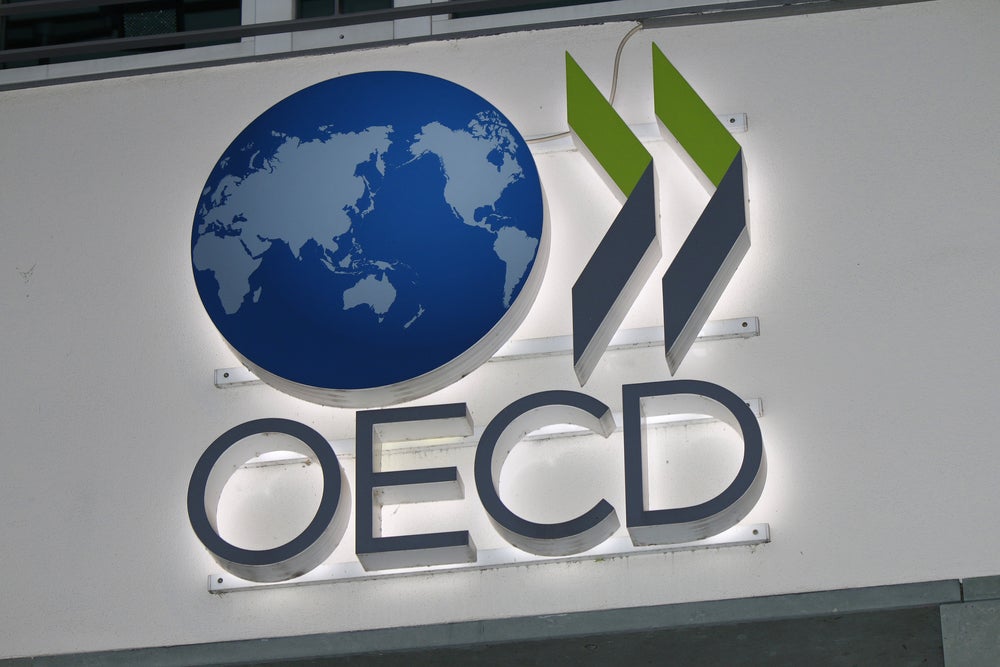
Global foreign direct investment (FDI) flows saw strong growth in 2021, beating pre-pandemic levels, according to a report by the OECD. However, the outlook for 2022 remains uncertain due to the Russia-Ukraine war.
The report states that global FDI flows reached $1.82trn in 2021, an 88% increase on 2020, which was badly affected by the onset of the Covid-19 pandemic. However, this bounceback also surpasses pre-pandemic levels, up by 37% on 2019 figures.
Record high earnings of foreign-owned business (which were not distributed to parent companies) is a key factor behind this increase, according to the OECD. More specifically, the report states that “fewer of those earnings were distributed back to parent companies, resulting in higher levels of reinvested earnings, which spurred the rebound. OECD FDI equity inflows also increased by 25%, exceeding pre-pandemic levels by 4% and slightly reverting the declining trend observed since 2016. In contrast, OECD intra-company debt flows remained negative for the second consecutive year.”
Glenn Barklie, chief economist at Investment Monitor, says that an 18% increase in greenfield FDI is expected for 2021, given how companies ramped up physical investments after the Covid-19-related lockdowns saw project levels fall by more than one-fifth in 2020.
“The US, Germany and the UK are expected to remain the leading destinations for greenfield projects," he adds. "Many countries have shown dramatic escalations of inbound projects. Asia, North America and western Europe continue to be key inbound and outbound regions. The recovery had been expected to continue in 2022; however, the Russian invasion of Ukraine has somewhat depressed the current outlook.”
Eyes on the leading FDI recipients
The US, China, Canada, Brazil, India, South Africa, Russia, Switzerland, Mexico and Germany were the ten leading FDI recipients in 2021, according to the OECD.
The data also reveals that the FDI inflows in OECD member countries have grown by 75%, amounting to $809bn in 2021. This is 5% up compared with pre-pandemic levels.
However, there was decline in FDI inflows into the EU 27 countries in 2021. The 30% drop is due to decreases in Ireland, Germany and Luxembourg, which are down from peak levels recorded in 2020. In addition, the Netherlands has experienced a third consecutive year of disinvestments.
As for the FDI inflows to G20 economies, there was a 67% year-on-year increase in 2021. More specifically, FDI inflows to OECD G20 economies increased by 96%, and by 43% in non-OECD ones.
Who are the top FDI investors?
The OECD report shows that the US, Germany, Japan, China, UK, Canada, Russia, Ireland, South Korea and Belgium were the top ten major FDI investors by country in 2021.
The data also shows that FDI outflows from the OECD area experienced steady growth in 2021, reaching $1.3trn. This is up 74% on pre-pandemic levels.
In addition, the report states that “EU27 outflows increased five-fold largely as a result of increases from previous large negative outflows recorded in Ireland and the Netherlands and in other selected EU countries”.
There was also an 86% rise in FDI outflows from the G20 economies in 2021.
The FDI market bounced back in 2021, showing solid increases in outflows and inflows. However, there are concerns about the future outlook following the Russian invasion of Ukraine and the sanctions issued both against and by Russia, which are having a large impact on the global economy.



